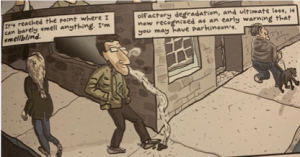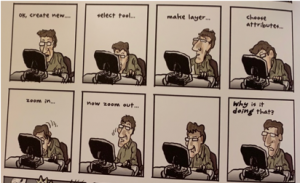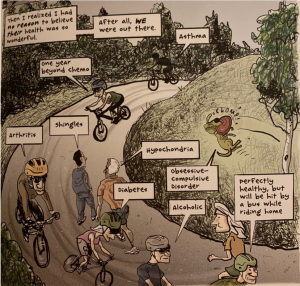The Barclay article highlights very important information that Americans need to know as the coronavirus continues to spread. The popular notion of “flattening the curve” has been emphasized on many media platforms because it is so important for combatting the pandemic. The article included a chart that embodies this notion, showing the daily number of cases with and without protective measures. The graphic depicts the cases without protective measures in a red curve, while the other curve is gray. Distinguishing the colors in this manner signifies the unavoidable danger if we do not make an effort towards flattening the curve and slowing the spread of COVID-19. Barclay includes a tweet from Carl Bergstrom that states, “even if you don’t reduce total cases, slowing down the rate of an epidemic can be critical.” I found this point extremely interesting because people often get caught up in hoping for a cure or avoiding contraction of the disease at large, which are both very important, but so is slowing the spread, even if it means the same amount of people are infected. The United States is not prepared for a health crisis of this magnitude and hospitals around the country, especially in populated urban hubs, cannot support the demands of coronavirus due to lack of equipment, staff, and space. Flattening the curve through social distancing is the best way we can help healthcare workers because they can provide better care when the number of infected patients is spread across multiple weeks, rather than in large influxes.
What is important to remember during this isolating and strange time is that social distancing is not grilling out with your friends or going to the store for non-essential items. Many individuals, particularly young adults, fail to recognize the risks associated with such activities. We all must make sacrifices to mitigate the spread, and contrary to what many believe, going out and having gatherings puts all of the individuals involved at risk, regardless of age. COVID-19 does not discriminate and will infect any host that has the machinery needed for survival, and although I may not experience symptoms during infection, I am still a carrier and my actions could prove deadly to another person if I go out and inadvertently spread the virus.
Barclay, Eliza, and Dylan Scott. “How canceled events and self-quarantines save lives, in one chart.” Vox, 10 March. 2020, https://www.vox.com/2020/3/10/21171481/coronavirus-us-cases-quarantine-cancellation. Accessed 9 April 2020.


